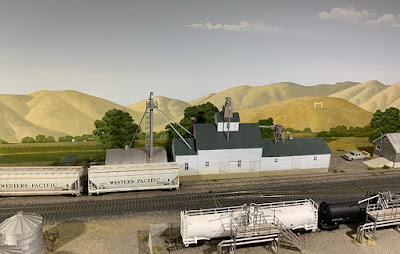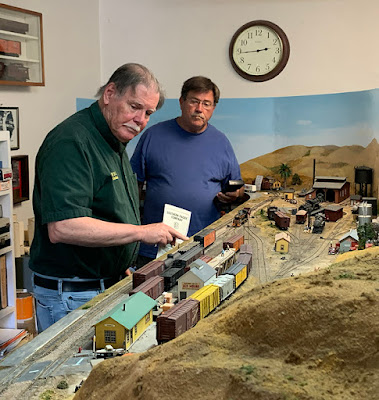Looking at some freight cars I’ve picked up at swap meets, and seeing the variety of couplers on some of them, led me to reflect on these components in the early years. The standard of practically all HO modelers today, the excellent Kadee coupler, was just arriving on the scene before 1960, and was different from today’s version.
In the 1950s,one had three kinds of choices. A number of kit makers gave you dummy couplers, some of them poorly shaped, which were white metal castings. But Varney gave you a black plastic dummy which was scale size and shape. These are so good looking and accurate that I have installed them in contest models, just for appearance, though of course they aren’t very suitable for layout use.
If you operated with these couplers, you had to lift one of the cars to be coupled, and lower it down to engage the coupler on the other car. Not a big deal, but hardly prototypical, and it slowed down all switching moves.
For operating couplers, what seems to have been the original design was the Devore coupler. These were white metal, and had an operating rod that was designed to look like an air hose. When the rod was raised, it freed the knuckle to open, much like the prototype coupler pin. Note that this is the “new 1950” coupler.
These could be remotely uncoupled with a physical ramp, a slight incline which would put upward pressure on the rod and open the knuckle. When it worked, this was nice. And when knuckles were open, two of them would automatically close and couple when brought together.
The problems were several-fold. First, when one of these was really operating right, it was quite a pleasure to use. But for every one like that, you had a couple that weren’t consistent, and sometimes didn’t work well, and at least one that was stubborn and hardly ever cooperated. Also, as they were white metal, you had to paint them, and paint hardly ever improved operation. After a time, this coupler was sold by Devore to Model Die Casting, and for a number of years was included in Roundhouse kits.
Devore, incidentally, made all kinds of other castings and even freight cars. I have one of their 36-foot depressed center flat cars, and still have its original box. I posted awhile back about restoring this car for operational use (see the post at: https://modelingthesp.blogspot.com/2020/08/restoring-devore-kit-part-2.html ).
But for the serious operating modeler, there was a far better choice than dummies or Devore couplers: the Mantua coupler. This was a hook and loop design, made of brass, and it too required a ramp; but its operation was entirely dependable and consistent. Its operating pin, under the coupler box area and thus largely invisible, simply raised the hook and allowed uncoupling.
From beneath an installation, you can see the single screw used for attachment, and at a slight angle, the large operating pin. Here the hook part is barely visible, seen within the loop.
From above, the coupler could be painted black, minimizing its rather grossly unprototypical appearance. Here, the hook part is more visible. Still, for many modelers, the appearance of this was really not okay on otherwise realistic models.
The first Kadee coupler in the late 1950s looked much like its later appearance, but with an important exception: the operating pin was long and straight, sticking down below the coupler, and the reason was that a ramp was needed to operate it: a converging pair of, usually, wires which pressed the two coupler pins toward the center and opened both couplers.
Even so, the new Kadee was very dependable and reasonably similar in appearance to a prototype coupler, and quickly made inroads among those who wanted to be able to operate freight cars. The later introduction of magnetic rather than mechanical ramp uncoupling was a further improvement.
Today, we are accustomed to extremely reliable operation of Kadee couplers, and when they are installed throughout a fleet, Accumate couplers, but back in the early days, choices were more complex.
Tony Thompson

















































